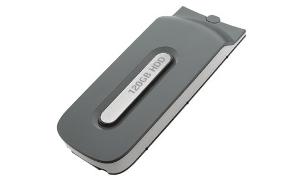In the gaming world, New Year celebrations are determined by the number of new titles, and whether any new platform is going to be released in the upcoming year. This year PlayStation took center stage and rolled out its latest gaming venture; the PlayStation Vita. Vita is Sony’s contribution to be the next generation handheld market, building on the solid foundation which PlayStation portable made, selling more than 70 million units worldwide.
As of yet, the PlayStation Vita has officially only been launched in parts of Asia, but surprisingly it didn’t create the impact that was anticipated. Japan, considered to be Sony’s home territory, lacked in initial sales figures and general excitement amongst hardware packed in Vita is nothing short of being drool-worthy. Though North America, Europe and South America are completely different kind of market, Sony will have to rethink their marketing strategy.
The Beast in Vita
Let’s get something out of the way first; the PlayStation Vita packs a powerful punch. Capable of churning out insane graphics, the likes of which have a handheld, its proper gaming platform. A blend of four-core ARM cortex A-9 processor, 512MB Ram (128MB of video Ram) and, for addition eye candy. A dedicated quad core GPU is a very respectable spec sheet for any gaming device. Focusing on the form factor is a bit tricky, since it’s bigger than most mobile phones but smaller than most tablets. The design is somewhat similar to the PlayStation portable, plus the welcome addition of dual analogue sticks and a vibrant 5-inch OLED capacitive touch display. Which, I must say, is absolutely dazzling to look at; the colors are deeper that what most Android phones in market can manage, and the size of the gaming gadget really enriches the experience. The shoulder buttons, the d-pad and face buttons are all still there, but your fingers will probably be spending most of their time onscreen.
Superior software
Vita comes preloaded with a bundle of technologies at your disposal. A read touchpad gives gaming a whole new perspective, and altering the pressure of your fingers makes the game respond in different ways. We saw this in action at the e3 conference, where the read touch pad was used to manipulate the terrain in ModNation Racers. Also, new on the hardware are dual VGA cameras (front and rear facing), a six-axis motion sensory system, built-in GPS and a 3-axis electronic compass. The usual blend of wireless technologies is also there. The build quality is as you would expect. Top notch and not for a second will you feel like Sony tried to cut any corners. The feedback and resistance of the buttons is well-balanced and the tactile response from the body shows that it is meant to last.
New battle frontiers
The war has moved on. The battle for superior hardware has been overtaken by how software is implemented to fully utilize the hardware. The time-frame that people now have is very limited; not only for gaming, but entertainment in general. To make things even harder for the handheld in duster, Casual games are captivating even the most hardcore gamers. So superior graphics have been overshadowed by fun and intuitive game play. Mobile phones have started to justify the tag of being called “Smartphone’s” and the value of being in consumers’ pockets has skyrocketed. Sony is fighting an uphill battle with its Vita, and to ensure that they make its presence known, they have launched Vita with the strongest gaming lineup ever by Sony.
Several AAA titles including Uncharted: Golden Abyss, Call of Duty, FIFA, Silent Hill, Wipeout 2048, Supremacy MMA, Ridge Racer, Ninja Gaiden, and Virtua Tennis 4 have been launched or are in the pipeline to be released in the near future. How well these games fare is what we have to see – after all, it’s the games that make or break a platform.
Intuitive is they name
On the interface front, Sony has deviated from XrossMediaBar (XMB), and introduced something called Live Area. Heavily influenced by the phones of today, it’s a touch-sensitive navigational environment that focuses on apps with big, bold floating icons to do all the work. It checks all the boxes of being a decent UI; smooth, fast and animated. Everything here has an app, from movies, pictures, settings to…. Yeah, everything. This may be fine for most, but I felt a little restricted. Facebook, Twitter, Skype etc are all integrated and Sony will be looking to add a few more apps in the upcoming firmware updates.
PlayStation Vita has also ditched the universal Media Disc (UMD), and have come out with a memory card aptly title the PlayStation Vita card. These will be available in 4GB to 32GB range. Games are purchased from the PSN Store and downloaded directly onto the card, or a physical card with a preloaded game can be bought, though the earlier option sounds more Eco-friendly. Games range from a reasonable 14.99 US dollars a rather expensive-for-a-handheld 49.99 US dollars.
What lies ahead?
Tough times lay ahead for this gem of a console. However, we already know that Sony knows how to play ball when it comes to driving sales up through sheer exclusive content. Vita isn’t just battling Nintendo for the handheld gaming market share, like its predecessor had done; it’s also competing with Android and Apple devices. Tablets and Smartphone’s have already caused major ripples, and the focus has shifted significantly away from the exclusive handheld gaming market. And that only heightens the anticipation. Sony has launched a PlayStation SDK, which is trying to bridge the gap between its PlayStation firmware and Android by letting developer’s port content. But the results are yet to be seen. It is the first time Sony is going to be perceived as the underdog in this market, and they better step their game up.


